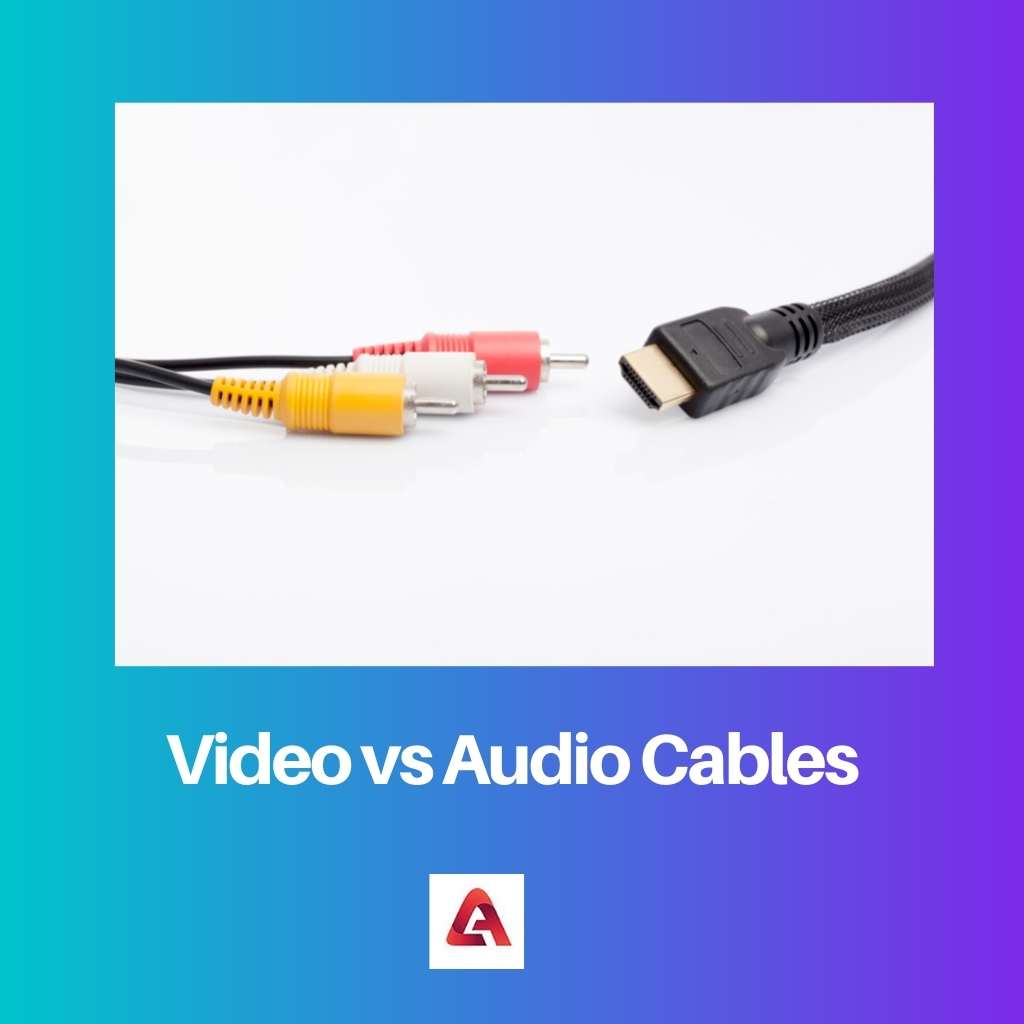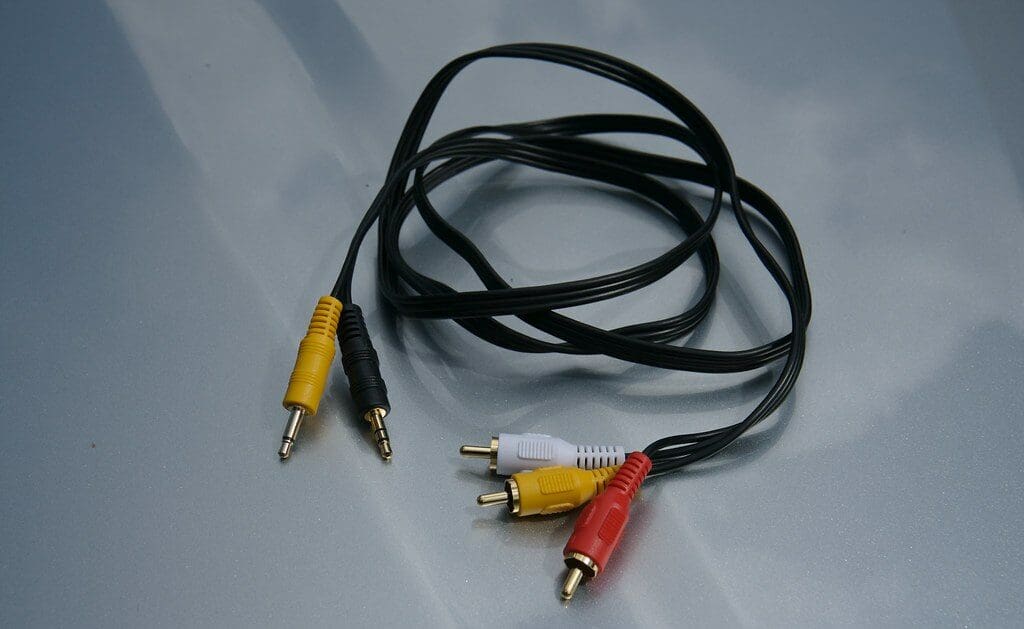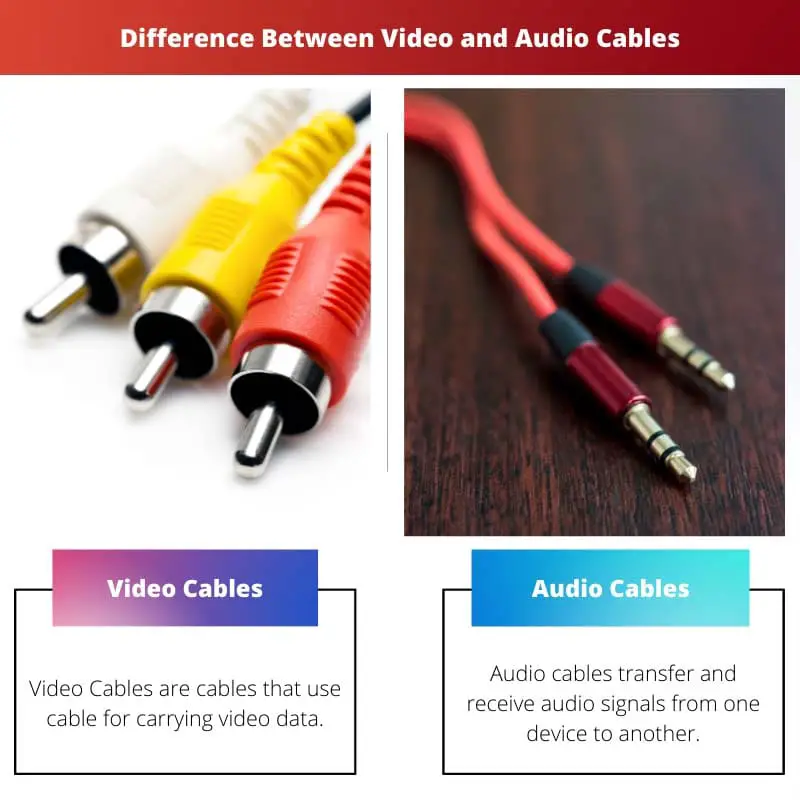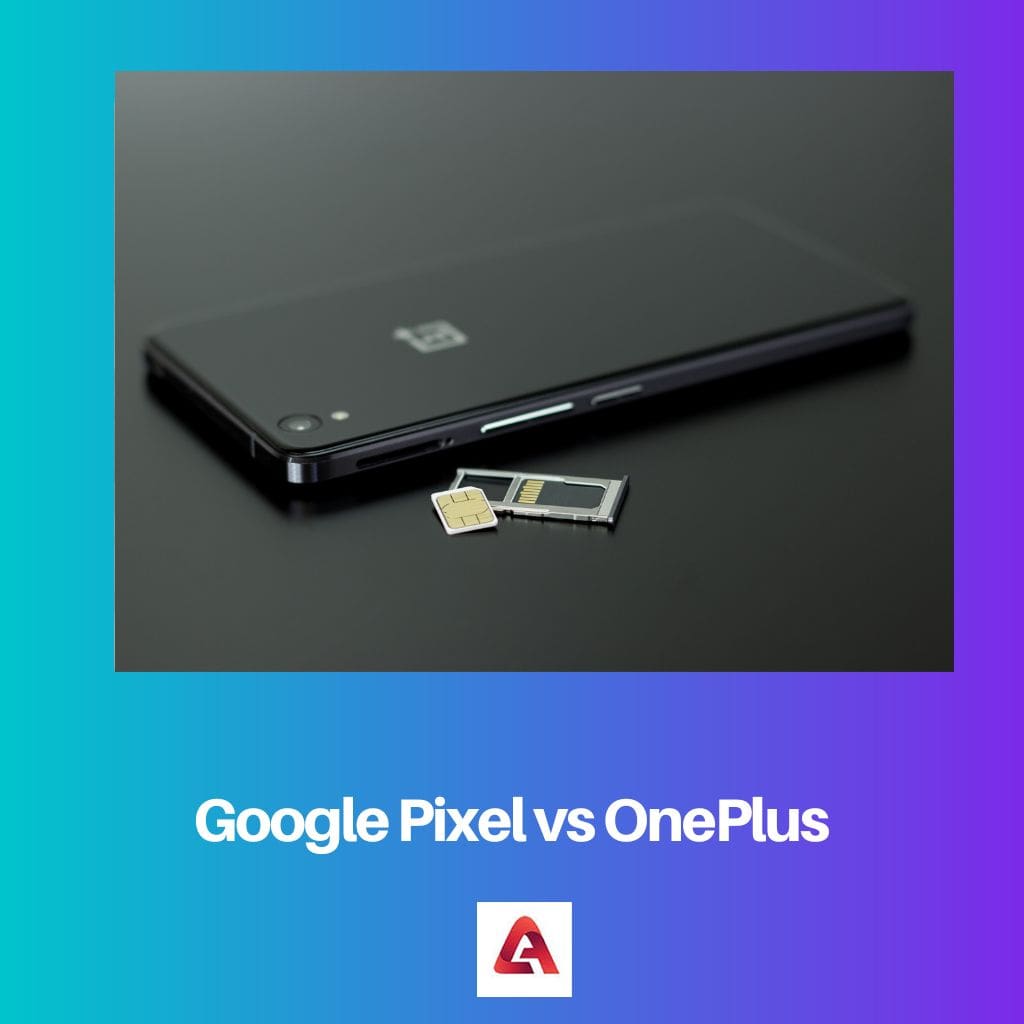The difference between video and audio cables is that video cable transfers images displayed in motion in the interface. In contrast, audio cable transfers music, speech, or any other sound in the interface.
The majority of videos have audio to go along with them.
When it comes to video and audio cables, there are a few notable differences. While video and audio cables can transmit signals, the two are vastly different.
Audio and video are fantastic media forms, but they’re not the same. The following article lists common differences between video and audio cables.
Key Takeaways
- Video cables transmit visual data from a source device to a display device, such as a monitor or TV.
- Audio cables transfer sound signals between components like speakers, amplifiers, and source devices.
- Selecting the appropriate cable type ensures optimal performance and signal quality for audio and video devices.
Video vs Audio Cables
Video cables transmit video signals between electronic devices such as TVs, projectors, and DVD players. Audio cables transmit audio signals between electronic devices such as speakers, headphones, and amplifiers, coming in various types, such as RCA and TRS.

Video Cables are cables that use cable for carrying video data. These cables transmit video signals and have other signs, such as sound.
Video cable can be used in commercial and residential applications by transferring video content from one place to another. The lines are available in different types, shielding, and materials.
Audio cables transfer and receive audio signals from one device to another. Audio can be transferred from a source device, such as an instrument or computer, to an amplifier or recording device.
The audio cables’ quality can significantly affect the resulting sound quality.
Comparison Table
| Parameter of Comparison | Video Cables | Audio Cables |
|---|---|---|
| Signal | Audio cables experience one and zero variations. | Digital signals are sent through audio cables. |
| Transmission | Video cables experience voltage variations. | Optical, Coaxial, HDMI, RF Coax, and A/V Jacks are the most common audio cable port interfaces. |
| Types of ports | VGA, S-Video, Display Port, Thunderbolt, and DVI are the most common video cable port interfaces. | Video cables connect devices such as VCRs, DVD players, camcorders, and satellite receivers to televisions or other video equipment. |
| Connected with | Video cables are used to connect devices such as VCRs, DVD players, camcorders, and satellite receivers to televisions or other video equipment. | Audio cables connect devices such as CD players, tape decks, and MP3 players to speakers or amplifiers. |
| Made of | Video cables may have more than one conductor, but they are almost always made up of copper wire or another type of metal. | An audio cable has two conductors surrounded by insulation. The conductors take the form of copper wire or another type of metal. |
| Terminated with | Video cables are terminated with RCA connectors. | Audio cables are terminated with mini-plugs. |
What are Video Cables?
Video cables are the wires used to transfer videos from one device to another.
The most common applications for video cables include connecting a television to a VCR or DVD player, connecting a computer to a monitor or projector, and connecting a cable box to a TV set, among other uses.
Tape and video connectors vary depending on the source and destination devices. For example, S-video connectors are used mainly for analogue and projectors, while component video connectors are used for high-definition TVs.
Video cables with composite ports are used when connecting a device with multiple RCA ports (such as a VCR) to a television.
Video cables comprise three main parts: the connector plug at each end of the wire, insulation covering the wires themselves, and sheathing wrapped around both components.
Connector plugs consist of different shapes and sizes that match the ports on each device. Connecting these two parts allows you to transfer your videos from one device to another.

What are Audio Cables?
Audio cables are used for transferring audio signals from one device to another. They are not as complex as video cables but have the same basic structure.
An audio cable consists of two conductors that carry the signal and two shielding layers that protect the movement from interference.
The main difference between audio and video cables is that audio cables can be much shorter and still produce good-quality sound.
There is, however, no strict rule on how short they must be, so long as they are long enough to connect the devices.
Audio cables are commonly used in home theatre, car stereo, and personal stereos.
In a home theatre system, you’ll find an audio cable connecting each speaker to the receiver/amplifier unit, where it’s amplified before being sent out to each speaker.
You’ll find an audio cable connecting each speaker to the car radio in a car stereo and an audio cable connecting the headphones or speakers directly to the player device in a personal stereo.
The quality of the audio cable can affect the transmitted sound quality and the equipment’s portability. Audio cables can be purchased in various sizes, lengths, and rates.
For example, some are made with higher-quality materials than others. These factors can affect pricing, but they also can make a big difference in how well the cable transmits sound.

Main Differences Between Video and Audio Cable.
- The difference between video and audio cable is that video cable carries an analogue signal, whereas audio cable carries a digital signal.
- Video cables can transmit both audio and video data, whereas audio cables only carry audio data.
- Video cable insulation is made from polyethene or polyvinyl chloride (PVC), whereas audio cable insulation is made from plastic.
- Video cables are connected to a device such as VCRs, DVD players, televisions, or other video equipment, while audio cables are connected to CD players, speakers, or amplifiers.
- Video cables come in pairs of three wires, whereas audio cables have two wires twisted together.







